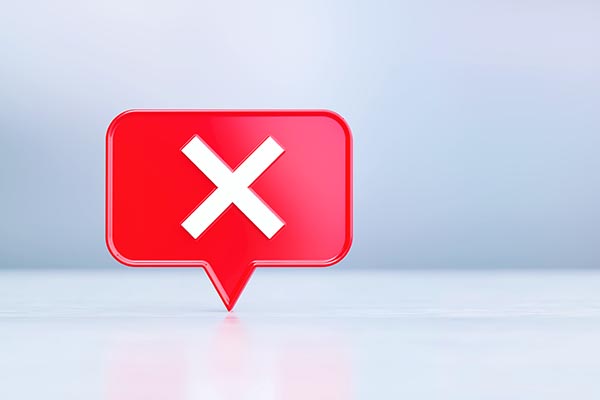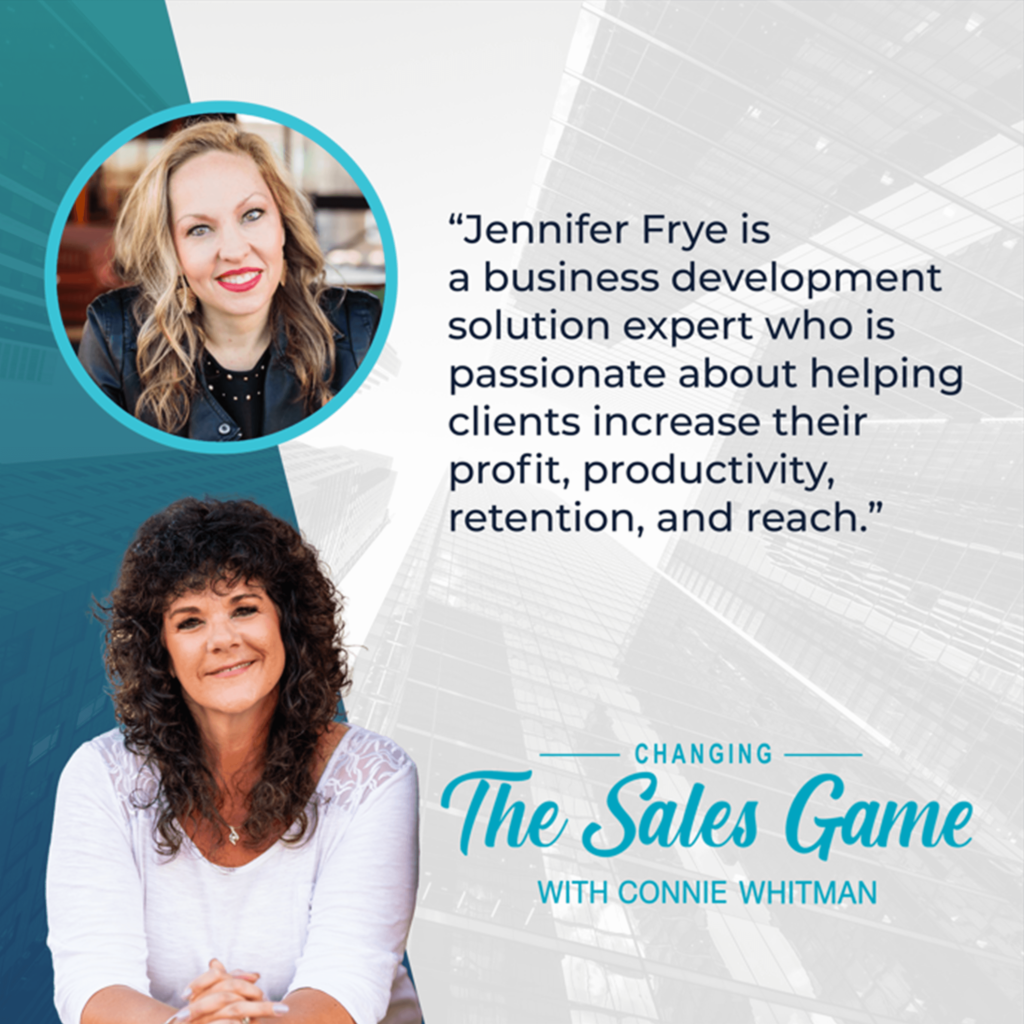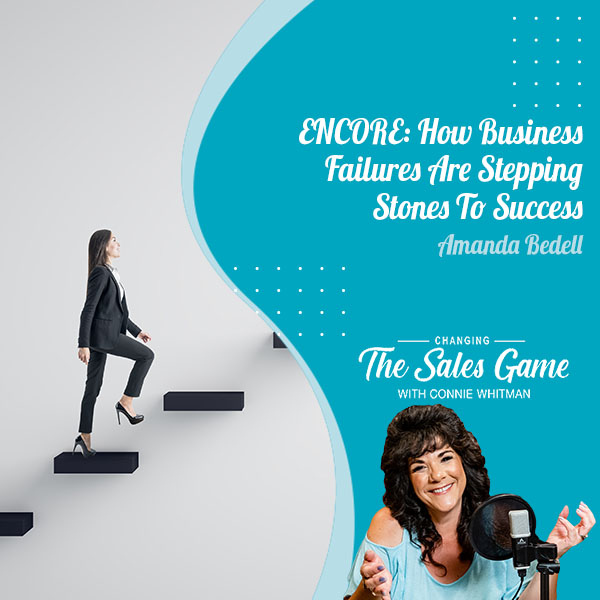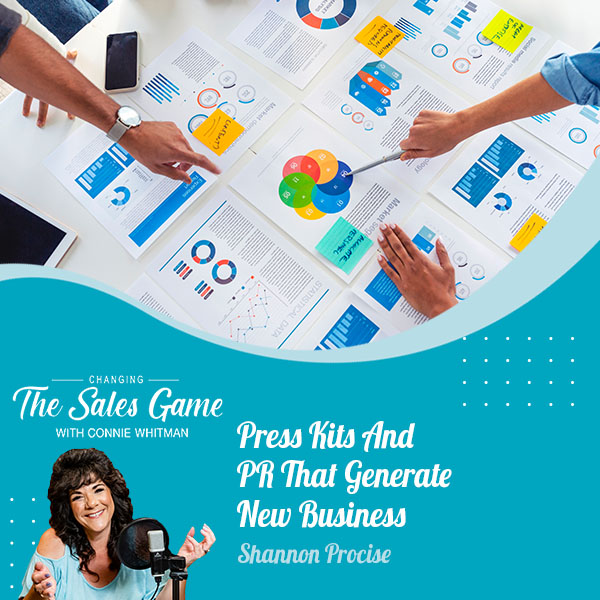Don’t be afraid to give up the good to go for the great.John D. Rockefeller
Check Out These Highlights:
I have been saying for years that good truly is the enemy of great. When things are good, we often choose to stay where we are because, after all, things are good. As soon as things start to go bad, ah, then we are more motivated to make a change or start on a new path. For me, this show is about this exact quote. My hope is that my show allows you to see and hear new strategies or options that you may have not realized existed and have been hiding in your blind spot.
Prospecting For Intentional Business Growth With Jennifer Frye (EP.117)
I am thrilled that you’re joining us. I hope as you tune in to the show that you truly feel my passion to change the word sales from that icky, manipulative, and sleazoid kind of presentation to hopefully, one that comes from love, care, and respect. At least that’s my world and my guest’s world as well. If you’re loving the show, please subscribe so you don’t miss an episode. Sharing is caring. Share with your peeps. If you can rate it in review, that’s amazing. I love reading the reviews and feeling the love, and that you guys are seeing value in the effort that we put out for the show.
My motivational quote for today is by John D. Rockefeller. He says, “Don’t be afraid to give up the good to go for the great.” I have been saying for years that good is truly the enemy of great. This is the reality. When things are good, we stay where we are because, after all, things are good. As soon as things start to go bad, that’s when we say, “I think I need to do or change something.” For me, this show is about this exact quote. My hope is that as you listen and follow each episode, it allows you to see strategies, ideas, or options that you may not have realized existed because they’re hiding in our blind spots, and we all have those blind spots.
You’re in store an amazing treat. My guest is Jennifer Frye. She is the CEO of Appreciated Assets Business Solution. Their sales accelerator program offers a done-for-you cold calling service for their client, Appreciated Assets team will reach out to your ideal prospects consultatively, educate them about your solutions, and set up new business appointments. With decades of experience, they’re able to keep your client-facing, grow your business, and provide you with all the benefits of a cold-calling campaign without the time or energy that’s needed. Please help me welcome Jennifer to the show. Jen, thanks for being on.
Thanks for having me.
It’s our favorite topic, sales. Does it get any better than this?
About Jennifer Frye:
Jennifer is the CEO of Appreciated Asset Business Solutions. Their Sales Accelerator program offers a “done for you” cold calling service for their clients. Appreciated Asset’s team will reach out to your ideal prospects consultatively, educate them about your solution, and set you up with new business appointments. With decades of experience, they are able to keep you client-facing, grow your business, and provide you all of the benefits of a cold-calling campaign without any of the time or energy.
How to Get in Touch With Jennifer Frye:
- Website
- Free Gift – Lead Generator
Not for me. It’s funny because there’s a very select group of people who can talk about this all day long and you are certainly one of them. I love what you do, and anyone who’s out there changing the narrative on what sales can be, what it should be, and removing that factor.
Intentional Growth
There’s no need for it. That’s the reality. If someone doesn’t need our services, why would I pitch them to sell to them? They don’t need us. I don’t want to convince someone to hire us, and you’re the same way. You’re all about intentionality. My first question is, what is intentional growth? What does that look like for you?
A lot of times, when I speak to business owners, they let me know that they’re growing their business through word-of-mouth referrals. Frankly, that’s how we’ve grown a lot of our business as well. It’s an easy way to grow your business with a very low threshold for failure and rejection. When you get to a certain level in your growth, if you want to extend beyond that, you’re going to have to look at some other solutions and strategies to create that growth trajectory for yourself.
When you get to a certain level in your growth, if you want to extend beyond that, you're going to have to look at some other solutions and strategies to create that growth trajectory for yourself. Share on XWhat intentional growth means is that word of mouth and referral is incoming. You don’t necessarily have a lot of control over the consistency, frequency, and quality of what’s coming towards you. Creating an intentional growth strategy is where you can get targeted in making sure that you are reaching out to your ideal prospects, educating them about who you are, why they should meet with you, what the results are from the solution that you can provide, and the support that you can provide, and then taking that conversation a step further as to what that could look like.
It’s coming up with that customized solution for wherever they are in their business or how you can support them and help them grow. It’s got to be customizable because everybody is not in the same place in business and all of those things in their growth trajectory, and all of those pieces of the puzzle. It’s interesting because I know a large part of my business growth has been through referrals and word of mouth. Isn’t that interesting that you said that? Why have you seen that that was good?
We’re not saying throw the baby out with the bath water and do not take referrals and word of mouth. That’s crazy because they’re the easy sales because somebody is referring them that already trusts and knows you. The person you end up speaking with, you might not be the right fit. At least they’re coming in trusting you so that you don’t have to get over that barrier of building that rapport because you’re already a trusted advisor with a solution. Why do you find that referrals and word of mouth aren’t enough anymore?
It depends on what someone’s business growth goals are. There are a lot of businesses out there that are very happy staying with the status quo and staying on a slow and steady trajectory. There are other businesses that are looking to scale. Scale can mean a lot of things to a lot of different people. Typically, that group, that word of mouth and referrals will only get you to a certain level of growth in your business. To see that go up exponentially, you want to incorporate some new strategies of direct outreach, either through targeted marketing and/or through a targeted sales strategy.

If they’re thinking, “I’ve grown steadily through word of mouth and referrals, but I’m liking what Jennifer is saying. Maybe I need to explore this.” How does somebody get started?
You want to start by identifying who is your dream prospect. Who is on your prospect wishlist? I love the number 50 because there’s something about it that is enough of outreach that by numbers you’re going to get a response and be able to beta test the messaging that you’re putting out there. Identifying the industries that you want to target, the size of the business of both the teams, as well as the revenue size that’s ideal for you. You want to identify the contact position. Who’s the decision maker that you need to speak with?
Location can be important for a lot of people because it’s not about getting thousands of leads right away but getting a very targeted list. You will also want to look at the psychographics of your ideal prospects. Do your ideal prospects offer incredibly supportive workplaces? Do they offer a lot of opportunities for women in business? Do they offer mission-based strategies or charities that they’re very closely tied to and involved in? Are those important to you for those ideal prospects? Once you got that list together, that’s when you want to put the messaging together to do that direct outreach.
The outreach is not a sales pitch. We do cold calling. I believe cold calling is the fastest and most effective way to develop rapport with your prospectors’ list, but it’s not by calling and selling anyone. It doesn’t work like that. No one wants to be sold and you’re not going to sell anyone. If you know you have a product or service that can be of service to your prospect wishlist, it’s your responsibility to reach out to them and let them know how you can support them. Educate them about who you are, introduce yourself, tell them why you align with the work that they’re doing, and then ask for that next step appointment to have more of a discovery call to see if it’s a good fit.
Cold calling is the fastest and most effective way to develop rapport with your prospect list. Share on XYou’re not selling because they don’t know you’re calling. They don’t know you from Adam. You have about a minute and a half. If it’s only, “Let me sell,” they’re like, “Who are you? I don’t even know that I need this.” You don’t know if they’re at a point where they truly need your service. You have to say, “Here’s how I help. Is this something you’ve been seeking? Let’s schedule an appointment.” It’s to secure that appointment, which I agree with. People hear cold calls and they go, “I’m not going to cold call.” This to me is a gentle or warm call.
With that said, I want to take one step back. You mentioned developing the list of the 50. It is funny, as you were saying, “I like that number,” I’m like, “Why does she like the number?” I like the number because you can get some traction with 50. It’s a good number to start with, but it’s not overwhelming. Whereas if you say, “Get 100.” People are like, “I don’t know that I could get 100.” Whereas if 50, you’re like, “I probably could pull 50 together on my list.” Next question with regards to who to call or who to reach out to, where do you find people find that first 50 that they’re going to start to look to see if maybe this is something for them to scale or grow their business?
There are a lot of different platforms you can use. I never recommend that anyone buy any data lists because they’re typically incredibly outdated. They’re expensive, but doing searches on Google and LinkedIn. There are various platforms out there that you can pay for to get information. I would start with what’s available to you now and what you already have access to.
Start simple. Here’s the other thing. My people are on LinkedIn. When I’m on LinkedIn, I can go in and be very targeted of who is even in my community. Maybe we know each other or maybe we don’t, but that is the perfect ideal client for me. That’s where the outreach should start. They’re already in my community. They’ve already accepted and know me to some capacity. Is that what you’re talking about?
Yes. One of the things that we do is we have an exercise called our Lead Finder where we take our clients through a series of over twenty different ways they have leads already that they’re not even aware that they have. These are prospects that are already somewhere in their system or have come across their desk or somehow connected to their world that we can create lead lists from there as well.
Reaching Out
We all have blind spots. As soon as somebody shines the light, you’re like, “How did I not see that?” Because we’re in a blind spot. We’re not expected to see our blind spots. That’s why we need help. We’re shining those lights in those areas that we’re trying to grow. I got my list of 50. I’ve mined the lead generation list that you have. Now I get on the phone. What do I say?
We all have blind spots. That's why we need help shining those lights in those areas where we're trying to grow. Share on XYou call and the first thing to do is introduce yourself. This is who you are and what you do, “I’m reaching out because,” and find that connection if there is a connection. One of the first clients I got was a luggage company and I was obsessed with them. It was the best luggage I’ve ever used. I’ll be using it when I fly out of town. I will never own a different set of luggage. I was obsessed with what they did, and I reached out to them a few times. I said, “I don’t even know what it would look like for me to work with you, but I have to help you grow this because everyone should own this luggage.”
I connected. It was authentic and genuine. I am still their biggest fan. We joke about it all the time. We’ve worked together in several different capacities ever since because I’m always trying to bring them value in different ways with different strategies based on what they’re doing at the time. You may not have that deep emotional connection, but you may have a local connection, “We are locally operated in Charleston, South Carolina, just like you,” or “I graduated from Tulane just like you did.” Finding that common ground of how you can connect with that person helps because then you’re not just a bot out there, and doing that quickly.
I’ll share a funny story. This was many years ago. We still did things live all the time. I was introduced to a center of influence. It happened to be an accountant in town. I was introduced to schedule the appointment. I walked into her office. My kids played hockey. We’re Devils fans here in Jersey, but we have the Rangers who are right in New York. I walk into her office. She had a fabulous painting of Madison Square Garden where the Rangers play. Immediately I saw the red and blue. I walked in. I shook her hand and looked over my shoulder. I go, “You’re a Rangers fan. That’s it. We cannot do business together. I have to leave now.”
She burst out laughing. I said, “Seriously, where did you get that painting? It’s fabulous.” We talked about hockey for about fifteen minutes. We didn’t even know each other. We’re like, “We got to go to a game together. Devil played the Rangers.” I go, “You were your Rangers, but it’s going to be the Devils home.” The whole fifteen minutes we were joking about hockey. She’s still a good friend to this day.
Having my Red Sox cup was certainly not a prop for today, but it happens all the time. If I hear that someone is a Yankees fan, I’ll do the same thing. That is establishing that rapport because you’re not going to hit that with all 50 people on that list. That’s a good thing. If someone hangs up on you or is a jerk to you, cool. That has nothing to do with who you are. That’s people’s biggest hangups about reaching out and introducing themselves and cold calling is, “What if they reject me?” So what? That leaves you room to speak with one other person that could be the right fit. They’ve self-selected.

I don’t want to work with jerks. I work with clients who don’t want to work with jerks. We’ve all gotten too established in our businesses that we have to work with just anyone. If someone is cruel to you or if they’re rude or unprofessional, that’s about them. I tell my clients, team, and my eight-year-old son this, “Hurt people hurt people.” If someone is good with themselves, they’re not going to be rude to you. Even if they’re not interested in why you’re calling, they’re not going to be unkind. The only reason someone is unkind is because they’ve got stuff that they’re dealing with themselves. It has nothing to do with you. Taking that personally prevents you from moving forward and reaching out to someone else. It is hurting yourself.
You’re out there to serve. If you’re afraid to do that because somebody said something or hung up on you or was rude, do you want to work with them when their needs jerk reaction is to be rude? I know you get this too, but I get all these emails on LinkedIn about what they sell. I respond politely, “No, thank you. Not at this time.” What happens is they keep emailing me, “Did you get it?” I immediately say, “Thank you so much for your follow-up or thank you for the email. I’m not interested at this time.” What’s funny is I get people going, “Thank you much for letting me know that.”
What effort did that take for me to respond, “No, thank you, not at this time?” Now I’m off of their list for now. If it’s something that I think I might want, I might say, “Not right now. If you don’t mind, maybe follow up in 3 to 6 months because this is something in my hopper for 2023.” Now it gives you an opportunity to say, “Sure, I’ll follow up now.” Are you going to follow up with me? That’s on you.
That’s a whole other topic, follow-up. I was polite about it. If I said, “No, thank you,” and then people respond, “Thanks for letting me know. I appreciate it. Have a great weekend.” “You too.” It’s good energy and how much effort did that take for you or I to respond that way versus hanging up? We’re busy. I get it. You’re busy. I’m busy, but you don’t need to be rude. I don’t want to work with people like that either where their first instinct is to hang up or be rude as well.
Following Up
Follow-up is important to any outreach. A lot of times, when someone says no to you, they’re not saying no. They’re not saying they’re not interested. They’re saying, “Not now.” If someone says, “I’m not interested,” you say, “It’s understandable. There’s a lot going on right now. It’s a crazy time of the year. When would be an ideal time for me to circle back with you?” You don’t say the time of year. That’s important because the time of year can expand it out way past what that prospect is going to say back to you. When I ask it every time, the responses range from “Give me two weeks” to “Give me until next year,” but I always have a date. They will receive a follow-up call from me because I’m meticulous in my follow-up.

A huge factor in our success is our consistency and persistence. Change that from a no to someone saying they’re not interested, and you say, “When would be a good time?” If they say two weeks, that’s not a no. That’s just not today. I’m going to blink and it’ll be two weeks. There is a lot more going on in their lives than just your phone call. You have to understand that everyone has stuff that they’re dealing with, but find the right time to reach back out and have that conversation.
Follow-up is the seventh step in my particular sales process. I’m sure you have a process too. We all do. You have to take a concept and systematize it so people go, “That’s what you want me to do. I could do that.” It’s just a system. My last step is follow up and I call it CPR like the paddles to give people life. Give them CPR, but mine is consistent. I use two of the words, consistent and persistent, and the last big word is respectful follow-up.
You’re not shoving yourself down their throat. That’s a great question, “When is a better time for me to follow up?” There’s something here and they go two weeks or a year from now. Done. You have to be consistent and persistent, but the respectful is the piece. You want to honor where they are and not, “You’re missing an opportunity because I’m the best thing since sliced bread.” If you’re coming across that way, you’re not the best thing since sliced bread for me.
I also take meticulous notes. If someone tells me that they’re in the middle of a move or that they have a family member who’s sick. With the number of people I talk to, it’s not possible for me to remember all of those details, but looking at the notes when I go to follow up, I can always remember, “They were going on a soccer tournament and that’s why we couldn’t speak until now.” Don’t do it if you don’t care. For me, it’s about establishing that. I love learning those details about my prospects because it helps me learn about them more, and see if it’s a good fit for us to work together.
Truly understanding who that person is, who that organization is, what their values are, or where they’re coming from helps us when we communicate with them because we want to meet people where they are, whatever that means. If I understand that they’re varying their soccer coach and they go on these tournaments, time is going to be a priority for them, or managing their time is going to be a priority, I have to make sure that whatever I’m delivering takes that into account as well. That’s an example of being mindful and meeting people where they are so we over-deliver what the expectation is. It’s not, “This is my program. Take it or leave it,” but, “Here’s my program. How can you use it in your real life?” That’s because we’re helping people in their real life and business.
Be mindful and meet people where they are so that you overdeliver what the expectation is. Share on XIn addition, you can also offer yourself and your connections as a resource. If someone is going through a real estate transaction and something blew up with the inspection, I may know an inspector that I can refer out. There is absolutely zero in it for me to do that except that I’m offering a great resource. I work with great businesses and I recommend great businesses. Being able to help someone through something difficult, whether they work with me or not, is good energy to put out there. If I got some new business for another business owner that I know, it is a great business. We’ll take great care of them.
It’s your reputation when you refer it. You’re not going to refer just to anybody because they make you look good as well. It’s all about that ripple effect. It’s all about starting from this place of service, whatever that means or whatever you’re providing to the client, and then that clarity. You can amplify once you get locked and loaded on the clarity, the process, and all of those things. You have to get all the pieces of the puzzle organized. Otherwise, it becomes difficult to move the needle faster than maybe we could go.
With the 50, I want to stick with that because I love that number. You take that 50, dig in, identify your ideal client, come up with that list of 50, figure out how you want to get on the phone, what you want to say so that you’re not being smarmy and salesy, but you’re trying to connect with that person. On LinkedIn and some of these resources, we can find out a lot about the person. If you’re active in a charity, autism, or something like that, you might say, “We’re connected on LinkedIn. I saw that you’re affiliated with this charity. Are you going to the event next week? I’d love for us to meet. I’m excited that you’re involved in this as well. I do this. What do you do?”
It doesn’t matter what you’re selling or what your business is, it’s human to human, then you could build from there. When I started 40 years ago, we used to have to go to a building, go to the kiosk, and get to the floor. What do Whitman & Associates do? We’d write it down, go to the library, look for the coding, and then go and find that and read in the book what that business did and say, “Do we want to do business with them or not?”

Do you know how much recon and how much time went in? You had to do it. Otherwise, you’re knocking on a door and it’s like, “This isn’t my client,” which is a bigger waste of time. Now we have these resources like LinkedIn, Facebook, Google, and other things that it’s easy to find information and where you are landing from that starting point of building a relationship. It’s always got to be about building a relationship.
I skipped past that stage for the sales research but I certainly used a phone book when I got started in sales. It’s a big thing on my desk.
It’s much easier to gain this insight so that we can do things at a bigger level, but also very strategic. There was a lot of throwing spaghetti against the wall to see what would work because you didn’t know what you were walking into. Now we could do a bunch of recons. Going back to that 50, how much time to mine that 50 does it typically take? People think, “Step 1, who’s my ideal client?” Do all of that clarity. Go to LinkedIn, wherever you find your people. I come up with my list of 50. I understand what I want to say on the phone and I’m going to customize it a little bit based on the information I find. I get on the phone and people are interested. How long does it take typically to get that connection either to meet or for it to turn into a business? Do you have those kinds of stats?
Best Practices For Sales
What I do is not complicated. The reality is that most people won’t do it. We do best practices that I’m happy to share with anyone because I want to change what sales should look like. A lot of times, we teach people exactly how to do this. We have a done-with-you service where we help our clients go and learn how to do this on their own. If and when they want us to take it over for them, we can do that. Here are some best practices. Follow up every four business days until you get someone to some other stage of the pipeline.
Having that persistence is important. If you expect someone to return your phone call after one voicemail, good luck. It doesn’t work that way. If I built my business that way, we would not be having this conversation. I would have a job right now. you have to be persistent and tenacious. You have to know that I’m reaching out for a reason. I could tell you in a minute about a story I’ve got about that because even I still get stories in my head.

It’s very four business days, and then you want to reach out. After about six weeks, you want to maybe go to email, “I’ve been trying to reach you. This is why. Can we set up a time to talk?” What the timeline looks like from that in getting that new business appointment toward close is so varied. There are some times when I have a client sign on our first call and there are sometimes that two years later, we work together.
If you go into it with that heart of service, knowing that you will work with them in the timeline that works for them and not for you, it will attract the right kinds of clients for you. You’ll create long-term trusting relationships, rather than pushing someone into something because it’s about your goals and your numbers. It should never be that way. Even if they should be making that decision to get what they want and work with you and engage with you sooner, other people have things going on. If someone has a kid that’s about to go to college and they’ve got to do all these trips, they don’t have the time to devote to you. Respect that and be there when they’re ready.
It keeps your pipeline full. You need business today but six months from now, you’ll need business. That doesn’t change. Here’s the thing. You’re filling your pipeline with dynamic qualified leads. The other thing is let’s say Jennifer and I work with each other or we hire each other. I trust you. I get results. What am I going to do? I’m telling everybody about Jennifer. As soon as I see an opportunity, I could go back. I’m selling her without even selling her. It’s like the luggage. You talk to everybody about this luggage before they were even a client because you’re like, “Everybody needs this luggage.” It got you in the door with them because you were passionate about their product, but you’re still bringing clients to them.
Even though you’re working with them to help mine at a bigger level, you were still referring at that smaller level. It’s all pipeline and follow-up related. It’s all advocating for the people that you love and respect, and are doing a good job out there in offering their services. The other thing is I was cracking up and I’m using the luggage tonight going to Nashville. You’re advertising for this company. It’s a conversation we’re having. It’s an appropriate example. You never know, but you got to keep that pipeline full.
I will tell you my story about stories that I tell myself. I’ve been doing cold calling my whole career. I’ve always done this. I’ve built my entire business off of this. I had a colleague that I’d worked with about a decade ago on a series of projects. I enjoyed working with him. With our service, because he was still doing that same work, I knew that we could support what they were doing.
I reached out to him starting last summer and didn’t hear back. I reached out again. I left probably six messages over the course of a few weeks. I never heard back. I started telling myself stories, “Maybe he didn’t like working with you. He doesn’t remember you,” or whatever it is. I had a lot of different stories in my head about why he wasn’t calling me back. He did call me back, apologized profusely, and thanked me for being persistent. The right clients will thank you for your persistence.
You’re not annoying them. You’re reminding them.
Now he’s one of my biggest referral partners. He’s been one of our biggest clients for a long time. I stopped after one message. I was reaching out. He was in the national park with his family on an RV trip and had literally no service for weeks. People have stuff going on, but we can make up our own stories that it’s about us. It’s never about us.
Jennifer’s Free Gift
It’s that negative record player. You kids are saying iTunes or whatever, but you know what I’m talking about. It gets louder and louder when we have those moments of uncertainty that, “It’s got to be me.” It’s never about us and that’s such a great example. He didn’t even have the connectivity to be able to respond or know that you had left a message. We need to get over ourselves. I know that you have a free gift which is the next step for people to connect with you. Share what your free gift is because I think it’s amazing.
It's never about us. That's the long and short of it. Share on XWe have a Lead Finder exercise that we take all of our clients through. We are always adding to it, but it’s 20 different ways that you already have that list of 50 somewhere in front of you, you just don’t even know it yet. I will take anyone that wants to reach out to us through our website, AppreciatedAsset.com. We’d be happy to take you through that lead finder exercise and help you come up with that idealistic 50.
If you have a question for Jennifer, reach out to Jennifer@AppreciatedAsset.com. If you would like that Lead Finder, go to AppreciatedAsset.com/contact-us. Put “Lead Finder” so that they know what you’re requesting, and her team could get that out to you ASAP. I highly recommend having a conversation with Jen. She might be exactly what you’re looking for you to grow, scale, or whatever your definition of that looks like, where you are and where you’re trying to go. Maybe Jennifer is the person that can help you with that.
Jennifer, thank you for being on. People hear cold calls like they hear the word sales and it’s icky. It’s them. Hopefully, after hearing us talk about it, it’s not about the ick. It’s that example of the gentleman that was in Nashville at the RV with his family. People have reasons why we need to be that consistent, persistent, and respectful follow-up. It’s important. Thanks for being on. This is an important conversation.
Thank you.
It is a real pleasure. I hope you’ll join me weekly as we question, build, and discover together, no matter where you are in business, sales, and your professional life even. If you’re a full-time salesperson and you’re struggling with cold calling, maybe the class that Jennifer offers where they can teach you how to do it is the piece of the puzzle that you need to work on. These resources are available. I hope that between my guests and me, we had provided some good tip strategies, ideas, and resources that you can then utilize in your business or your career. Thank you for tuning in. I truly wish you an inspired week.
Take one of the tips. Come up with your top 50 and identify clearly what your ideal client is. Whatever little piece that Jennifer has, and maybe a comment that I made, take it, dig, use it, and put that into your action. Action creates reactions and that’s where the magic starts happening. Jen, thank you. I will see you all in the next episode. Have a great one. Do something different and watch how your life changes and unfolds to do amazing things. I love you all. Thank you so much.
Important Links
- Appreciated Assets Business Solution
- Jennifer@AppreciatedAsset.com
- AppreciatedAsset.com/contact-us
- https://LinkTr.ee/conniewhitman
- https://www.ChangingTheSalesGame.com/communication-style-assessment
- https://ChangingTheSalesGame.mykajabi.com/All-Star-Community
Stalk me online!
- Connie’s Website
- Connie’s LinkTr.ee
- Connie’s #1 International Bestseller Book – ESP (Easy Sales Process): 7-Step to Sales Success
- Download the FREE Communication Style Assessment
- Join our All-Star Community
Subscribe and listen to the Changing the Sales Game Podcast on your favorite podcast streaming service or YouTube. New episodes are posted every week on Web Talk Radio. Listen to Connie dive into new sales and business topics or problems you may have in your business.

 Jennifer is the CEO of Appreciated Asset Business Solutions. Their Sales Accelerator program offers a “done for you” cold calling service for their clients. Appreciated Asset’s team will reach out to your ideal prospects consultatively, educate them about your solution, and set you up with new business appointments. With decades of experience, they are able to keep you client-facing, grow your business, and provide you all of the benefits of a cold-calling campaign without any of the time or energy.
Jennifer is the CEO of Appreciated Asset Business Solutions. Their Sales Accelerator program offers a “done for you” cold calling service for their clients. Appreciated Asset’s team will reach out to your ideal prospects consultatively, educate them about your solution, and set you up with new business appointments. With decades of experience, they are able to keep you client-facing, grow your business, and provide you all of the benefits of a cold-calling campaign without any of the time or energy.


